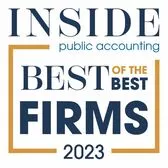Eckhard Walter, Tax Partner, David Zeiger, Tax Partner, Rosalinda Oasay, Tax Principal and Steven Diaz, Senior Tax Accountant
IRC §199A, which was introduced as part of the Tax Cuts and Jobs Act (“TCJA”), generally provides for a deduction of up to 20% of qualified business income (“QBI”). In August 2018, proposed regulations were issued. Amid the flurry of guidance issued in January 2019, which included a new set of proposed regulations, a revenue procedure on calculating W-2 wages, and a proposed revenue procedure providing a safe harbor standard for rental real estate enterprises, the final regulations were issued. For a summary of the real estate safe harbor, please see the Tax Alert issued on February 5, 2019, “Rental Real Estate: Trade or Business Safe Harbor Under IRC §199A.”
In general, the final regulations follow the proposed guidance published last August. The purpose of this Alert is to summarize certain of the modifications.
Reg. §1.199A-1: Operational Rules
1. Trade or Business. To be eligible for §199A, an enterprise operated by an individual or relevant pass-through entity (“RPE”) must first qualify as a trade or business. In an effort to emphasize the meaning of a trade or business for purposes of 199A and distinguish from definitions found in other areas of the Internal Revenue Code, such as §§ 469 and 1411, the final regulations adopt a slightly reworded definition to read “…a trade or business under section 162 (a section 162 trade or business) other than the trade or business of performing services as an employee.[1]” Given the large body of case law under §162, although requested, Treasury did not deem it necessary to provide any further guidance in the regulations.
2. Rental of Property to a Related Person. Solely for purposes of 199A, the proposed regulations provided that rental or licensing of tangible or intangible property to a related trade or business is treated as a trade or business if the rental or licensing activity and the other trade or business are commonly controlled. The final regulations clarify that this rule is limited only to situations in which the related party is an individual or a RPE.
Reg. §1.199A-2: Determination of W-2 Wages and Unadjusted Basis Immediately after Acquisition of Qualified Property”(“UBIA”)
1. W-2 Wages. Revenue Procedure 2019-11, issued concurrently with the final regulations, provides guidance for calculating W-2 wages for §199A purposes. This revenue procedure provides three methods for calculating wages for purposes of 199A(b)(4). The methods include a simplified method, “the Unmodified Box 1 Method” and two alternative methods, “the Modified Box 1 Method” and “the Tracking Wages method,” providing greater accuracy for determining W-2 wages for purposes of §199A. The revenue procedure provides guidance for calculating total wages for an enterprise or entity for purposes of §199A(b)(4) however, once total wages are determined, the amount must be properly allocated between qualifying and non-qualifying trades or businesses.
2. Excess §743(b) Basis Adjustments. Whereas the proposed regulations did not treat §§734(b) and 743(b) basis adjustments as qualified property, the final regulations now include 743(b) adjustments to the extent that they reflect an increase in the fair market value of the underlying qualified property. Note the UBIA used with respect to the §743(b) adjustment can only include the fair market value increase and not that portion of the step-up that is essentially a recapture of prior depreciation on the basis of the originally acquired asset. This interpretation, while reasonable, can provide for complex and detailed calculations to determine a proper amount depending on when the §743(b) asset was placed in service. See Reg. §1.199A-2(a)(3)(iv) and examples under subsection (D) for details.
3. Like-kind Exchanges and Involuntary Conversions. The final regulations now provide that the UBIA of qualified property acquired in a 1031 exchange is equal to UBIA of the relinquished property.[2] Adjustments are made for excess boot and cash and/or other property transferred by the exchanger to acquire the replacement property. Similar rules are prescribed for acquisitions of property pursuant to an involuntary conversion within the meaning of §1033.[3]
4. Qualified Property Acquired in Certain Nonrecognition Transactions. For 199A purposes, the final regulations provide that if qualified property is acquired in a transaction described in §168(i)(7)(B), the transferee’s UBIA in the qualified property is the same as the transferor’s UBIA in the property, adjusted by money paid or received.[4]
5. Qualified Property Acquired from a Decedent. In the case of qualified property acquired from a decedent and immediately placed in service, the UBIA will generally be the FMV at the date of decedent’s death. A new depreciable period for the property commences at the date of death, solely for §199A purposes.[5]
Reg. §1.199A-4: Aggregation
1. Aggregation by RPEs. The final regulations allow an RPE to aggregate trades or businesses operated directly or through a lower-tier RPE. Such aggregation binds the RPE and all its owners; e.g., what has already been aggregated cannot be separated. Individuals and upper-tier RPEs may add additional trades or businesses with a lower-tier RPE’s aggregation, so long as the rules under this section are satisfied.[6] All parties subject to an aggregation election most follow annual disclosure and reporting requirements in 1.199A-4(c).
2. 50% Ownership Test. Under the proposed regulations, a trade or business may be aggregated based on a 50%-or-more ownership test, which must be maintained for a majority of the taxable year. The final regulations clarify that majority of the taxable year must include the last day of the taxable year. Additionally, the 50% test with respect to partnerships refers to capital or profits in the partnership.
3. Reporting. A taxpayer who has not previously aggregated may do so in a subsequent tax year. Generally, an initial aggregation cannot be made on an amended return. However, the IRS will allow initial aggregations to be made on amended returns for the 2018 tax year. Aggregation is required on a continuing basis unless there is a material change in facts and circumstances that would cause a change in the aggregation.
Reg. §1.199A-5 Specified Service Trades or Businesses (“SSTB”)
1. Health. In favor of a more facts and circumstances approach, removed from the final regulations is the requirement that medical services be provided directly to the patient in order to be deemed as providing services in the field of health.
2. Consulting. Services within the fields of architecture and engineering are not treated as consulting services for purposes IRC §199A[7].
3. SSTB Examples. Treasury has provided additional clarifying examples in Reg. §1.199A-5(b)(3).
4. Services Provided to an SSTB. Under the proposed regulations, any trade or business that provides 80% or more of its property or services to an SSTB would also be considered an SSTB, if there is 50% of more common ownership of the trades or businesses. The final regulations strike the 80% threshold and plainly state that only the income from the related SSTB entity (50% or more common ownership) will be disqualified.[8]
5. Incidental to a SSTB. Removed from the final regulations was the rule that if a trade or business (that would not otherwise be treated as an SSTB) has both 50% or more common ownership with an SSTB and shared expenses with an SSTB, then the trade or business is treated as incidental to and, therefore, part of the SSTB, if the gross receipts of the trade or business represent no more than 5% of the total combined gross receipts of the trade or business and the SSTB in a taxable year.
6. De minimis Rule. Despite a flurry of comments suggesting different thresholds and approaches to handling the provision of incidental specified services, the final regulations retained the 10% and 5% cliffs for trades or businesses with gross receipts of less than $25 million and $25 million or more, respectively.[9] Therefore, an otherwise qualifying trade or business having gross receipts from the provision of specified services that exceed the aforementioned thresholds is still entirely disqualified. On a positive note, the final regulations added an example hinting at factors the IRS may consider indicative of operating separate and distinct section 162 trades or businesses for purposes of 199A. Separation of qualifying and disqualifying activities may be one way to avoid tainting otherwise qualifying trades or businesses. In the example, the qualifying and disqualifying activities keep separate sets of books and records, have separate, unaffiliated employees and issue separate invoices to their clients.[10]
§6662(a) Penalty for Underpayment of Tax
As a reminder, individuals who substantially understate income tax through the improper claim of the §199A deduction are subject to penalty. In this instance, the substantial understatement of tax is generally an understatement that exceeds the greater of $5,000 or 5% (normally 10%) of the tax required to be shown on the return.
There are numerous moving parts and calculations associated with determining the benefit of a Section 199A deduction. The Office of Management and Budget estimates that compliance time related to §199A will reach 3.157 billion hours.[11] It is important that taxpayers and their advisors work together in determining the application and maximum utilization of IRC §199A.
[1] Reg. §1.199A-1(b)(14)
[2] Reg. §1.199A-2(c)(3)(ii)
[3] Reg. §1.199A-2(c)(3)(iii)
[4] Reg. §1.199A-2(c)(3)(iv)
[5] Reg. §1.199A-2(c)(3)(v)
[6] Reg. §1.199A-4(b)(2)(i)
[7] Reg. §1.199A-5(b)(2)(vii)
[8] Reg. §1.199A-5(c)(2)
[9] Reg. §1.199A-5(c)(1)
[10]Reg. §1.199A-5(c)(1)(iii)(B)
[11] OMB Control Number 1545-0123




